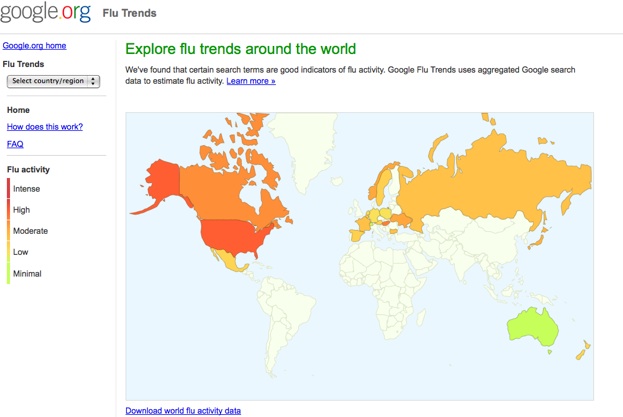
As we all gear up for flu season (have you gotten your shots yet?), Google is doing its part by expanding Google Flu Trends to 22 countries, from four. Google Flu Trends tracks flu-related search terms as an early predictor of flu outbreaks. In the U.S., Google’s data has a 92 percent correlation with actual U.S. government data, which can lag by two weeks or more.
Now if you look at the global map on Google Flu Trends, you’ll see that the U.S. is already in the red zone indicating high flu activity, compared to Europe, Russia, Mexico, and Australia. This tells me that either we are a nation of snifflers here in the U.S., or a nation of hypochondriacs who rush to our computers every time we sneeze to see if our neighborhoods are infected. (What if it’s Swine Flu!? Don’t panic).
Wondering why the U.S. is showing more flu-like symptoms (at least among searchers), I asked Google for clarification. Is it just because Google has better data for the U.S.? A spokesperson responded:
“We are indeed seeing unseasonably high estimates of flu activity for the U.S. That’s not because of more US data – it means that compared to the U.S. historical baseline, flu levels are “high.” If you look at previous seasons you’ll notice that the peak typically occurs in the winter months around February. We are already approaching those levels. It’s a nice reminder to observe the good practices that will help keep you healthy.”
You might also want to avoid shaking people’s hands, except for in Australia. They’ll look at you funny if you don’t shake, and it’s relatively safe there now with “minimal” levels of flu activity as the Southern hemisphere enters its spring months.
Below is a video explaining how Google comes up with its flu trends.